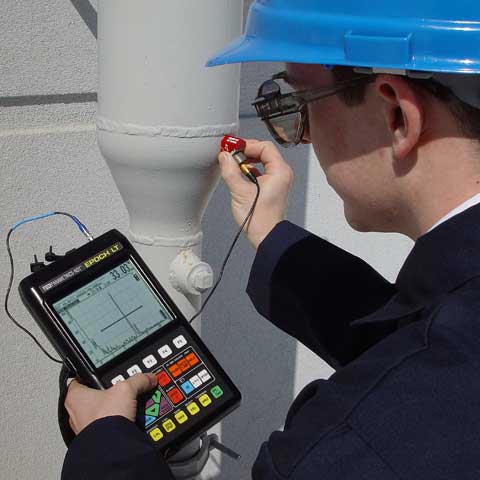Using advanced equipment, BSP provides the above testing services in different stages of the cathodic protection project, namely design, start-up, and maintenance.
Cathodic Protection System Remote Monitoring and Control
Other BSP's services regarding cathodic protection systems include implementing hardware and software systems for remote structure monitoring and control.
These systems are helpful in structures located in distant, difficult-to-reach areas to which dispatching a team for carrying out readings and inspection is challenging. In these cases, additional equipment is used for remote measurement, transmitting and displaying the results, and adjusting potential/current variables. BSP provides design, procurement, installation, start-up, and maintenance services for this purpose.
Ultrasonic Thickness Measurement and Crack Detection
Ultrasonic inspection to determine the metal thickness and detecting surface and internal cracks is a conventional method of evaluating the integrity and function of industrial equipment and parts. Given the extensive applications of this technique in different industries, BSP provides a wide range of services in this regard, including consulting and procurement. Accordingly, the BSP offers a thorough ultrasonic inspection service package.
Structural health monitoring and inspection
With the advancement of engineering sciences in recent years, novel methods are required to conduct building diagnostics for the multitude of old buildings in different industrial, commercial, and residential units. Structural health monitoring (SHM) of buildings based on their intrinsic characteristics is one of the most efficient building diagnostic methods. This method relies on the fact that the intrinsic characteristics of buildings, such as natural frequency, mode shape, and frequency response, remain unchanged over time. Therefore, in case of occurrence of faults in buildings, these characteristics change and can be identified and assessed. Moreover, it should be noted that the intrinsic characteristics of buildings are not dependent on the type and amount of building loads and environmental conditions and, therefore, are unique for each building.
The main advantages of SHM over other diagnosis methods are as follows:
- Phased Array Ultra-Sonic (PAUT)
- Time of Flight Diffraction (ToFD)
- Guided Wave Ultra-Sonic (GWUT)
- Automated Ultrasonic Crawlers C-Scan.
